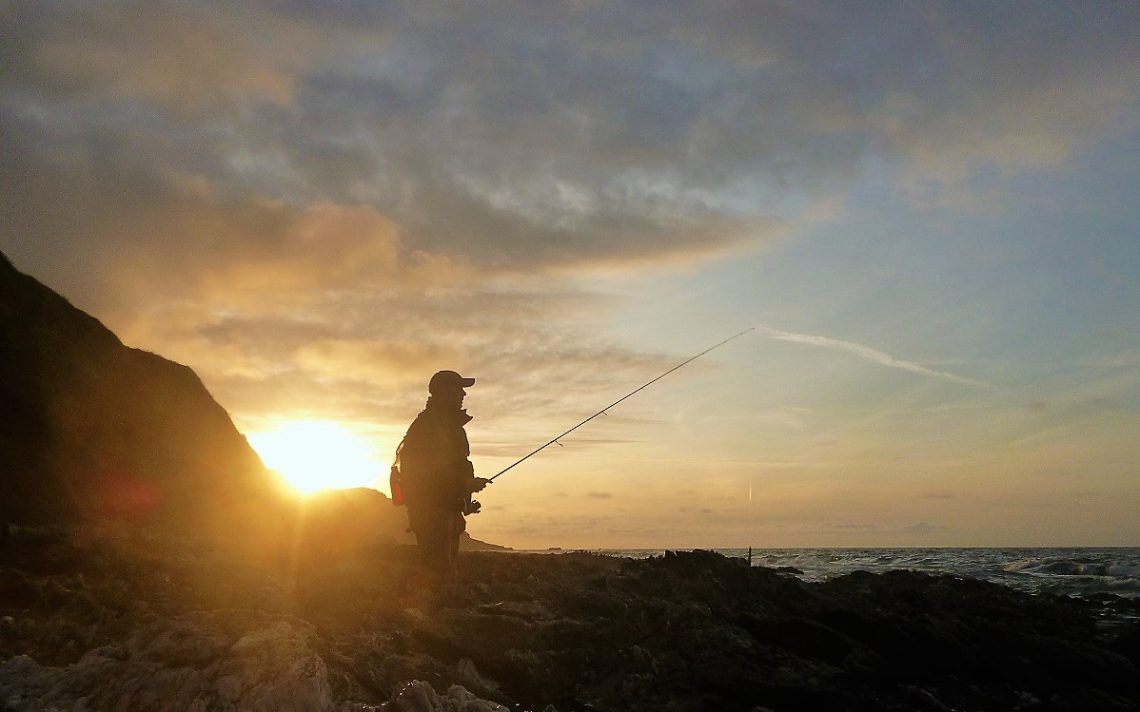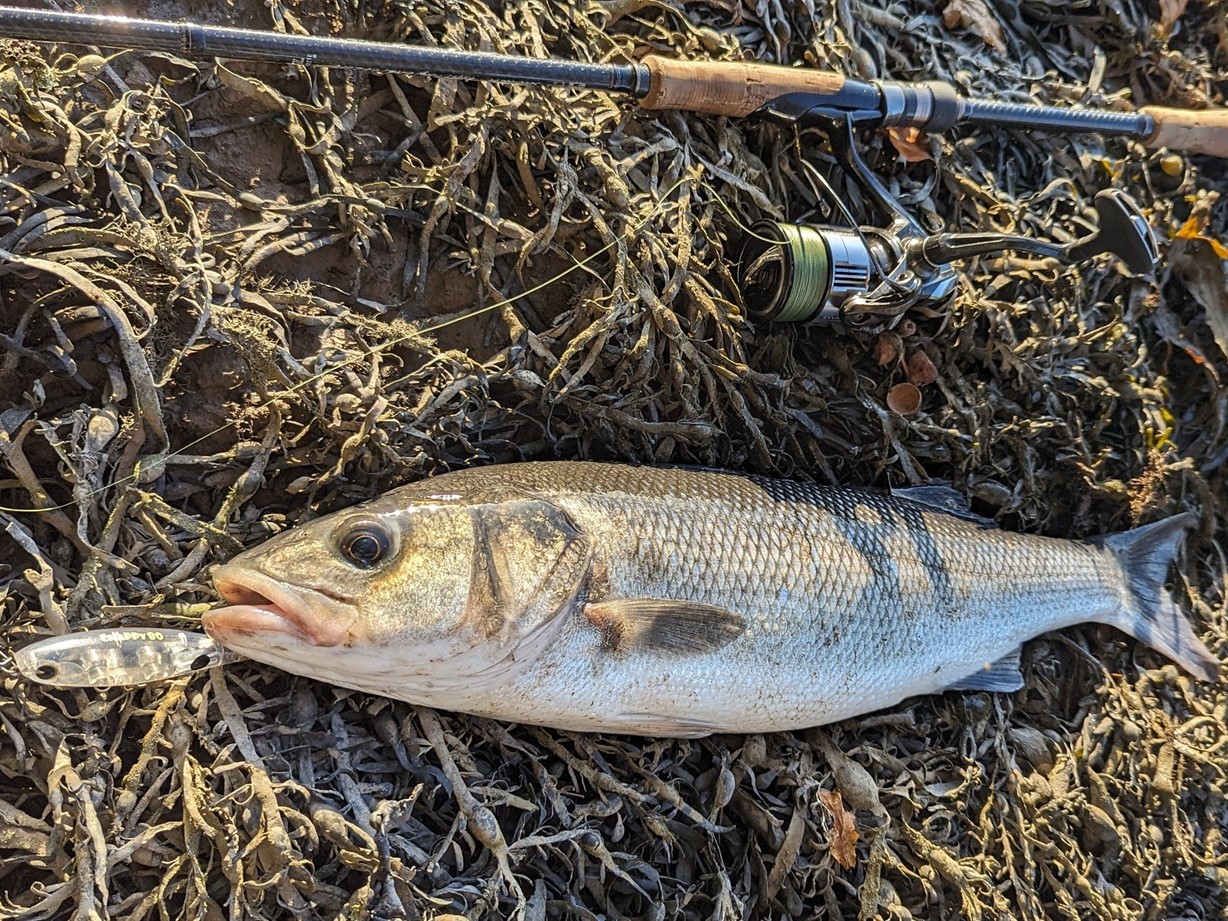10 Items of equipment I’d recommend from 2023
A Happy New Year, and welcome to my list of ’10 Items I’d recommend’ for 2023 – the contents of which I have collated through some ‘rather thorough’ use over the past 12 months! I envisage that the following paragraphs might well assist you – even more so if you’re hovering over that ‘Confirm Purchase Button’ like I was prior to many of the items enclosed below…..
If you follow anything that we (my clients) or I catch, then you would have noticed that lures such as the Patchinko 100 and 125, in addition to the Savage Gear Gravity Stick Pulse and Paddle Tails just continue to yield bass, after bass, after bass. But along with these ‘stalwarts’, that all still need to be ‘cast into and retrieved through’ the right place, at the right time, and just as importantly, in the correct manner, there are other lure types that have ‘made’ my Top Ten for 2023. Besides the lures, this has been a year of fishing and a guiding that has seen the items of clothing I have recommended herein to the absolute extreme. So here goes, commencing with the most expensive item first as usual!

Orvis Pro Breathable Stockingfoot Waders
RRP £699 Available from Orvis UK (here)
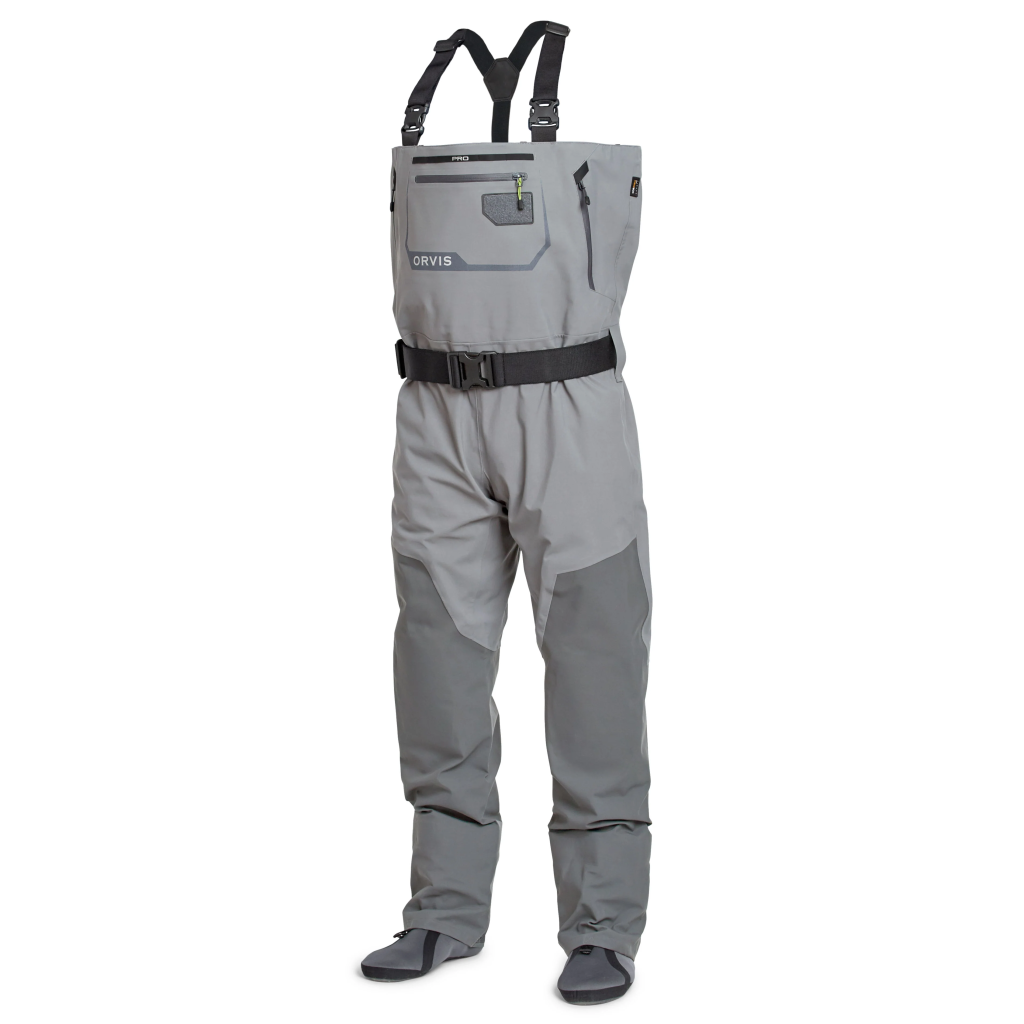
Rather annoyingly, the Orvis Pro Waders have just increased in price from the £679 they were 48 hours ago, and £100 more than they were 12 months ago… But then I guess that if anyone is prepared to spend even close to this kind of money on what is a perishable item, then an extra twenty quid is neither here nor there (which is precisely what Orvis think clearly).
As you may have read within my 2023 ‘Client Catches‘ and ‘My Catches‘ Reviews, I am out on the marvellous south Devon coastline and its picturesque tidal inlets, walking, climbing, clambering, slithering and standing, both in the water and out of it, between 270-300 days a year. Evidently then, the life-span of anything that I wear or utilise will be shorter than normal, or at the very least, it’ll become worn out or fail expeditiously in comparison to many of my fellow anglers, who may only fish once or twice a week perhaps.
I won’t lie. Having read the numerous reviews online (I have listed some below) I was still dubious about just how ‘good’ they might be – I mean everything else had failed me. However, what these Orvis Pro’s have now made me realise, is that when it comes to purchasing, wearing and/or testing (for various companies) all manner of breathable waders, I am now firmly in the camp that says I am personally better off either spending £70 on a pair of eBay specials quite a few times a season, or £700 once a year…
- https://troutbitten.com/2020/07/12/100-day-gear-review-orvis-pro-waders/
- https://www.hatchmag.com/articles/review-orvis-pro-waders/7714904
- https://manmakesfire.com/orvis-pro-wader-review/
Instead of going into all the jargon – listing the spec, and relaying the technical information that you can find either on the Orvis website or the reviews above, I will just tell you that I commenced wearing these waders (and the matching boots that I’m equally impressed with) on the 10th of March, and was still wearing them on the 30th December, as I stood, thigh-deep for three hours whilst I blanked without any issue whatsoever.
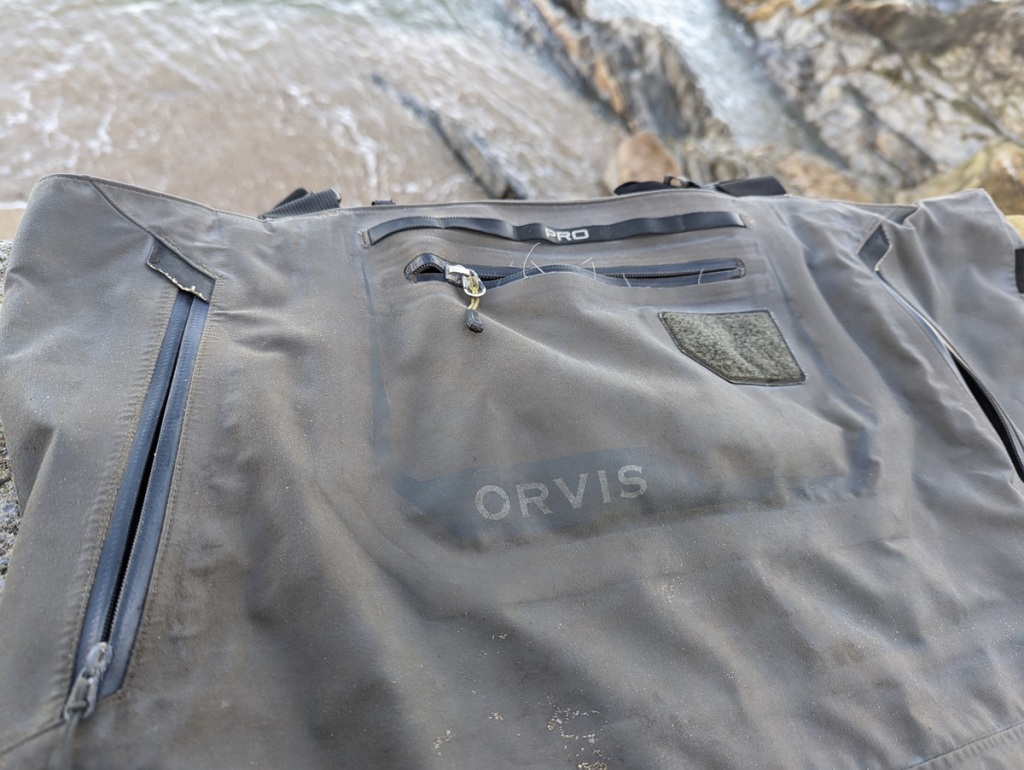
Now, this time frame may not appear overly impressive at first glance. But if I can ask you to consider that, ordinarily, I will usually get through between 5-7 pairs of waders each year, then I think you’ll agree that this is impressive… I will freely acknowledge the caveat that their use has been in conjunction with wearing a pair of 0.5mm neoprene socks (here) over the top of ‘stockingfoot’ element, and that in doing so I have undoubtedly extended the ‘life expectancy’ of this critical area. But on the other hand, I will also confess to not being the most fastidious when it comes to ‘washing them down’ although I have turned them inside out more often than not!
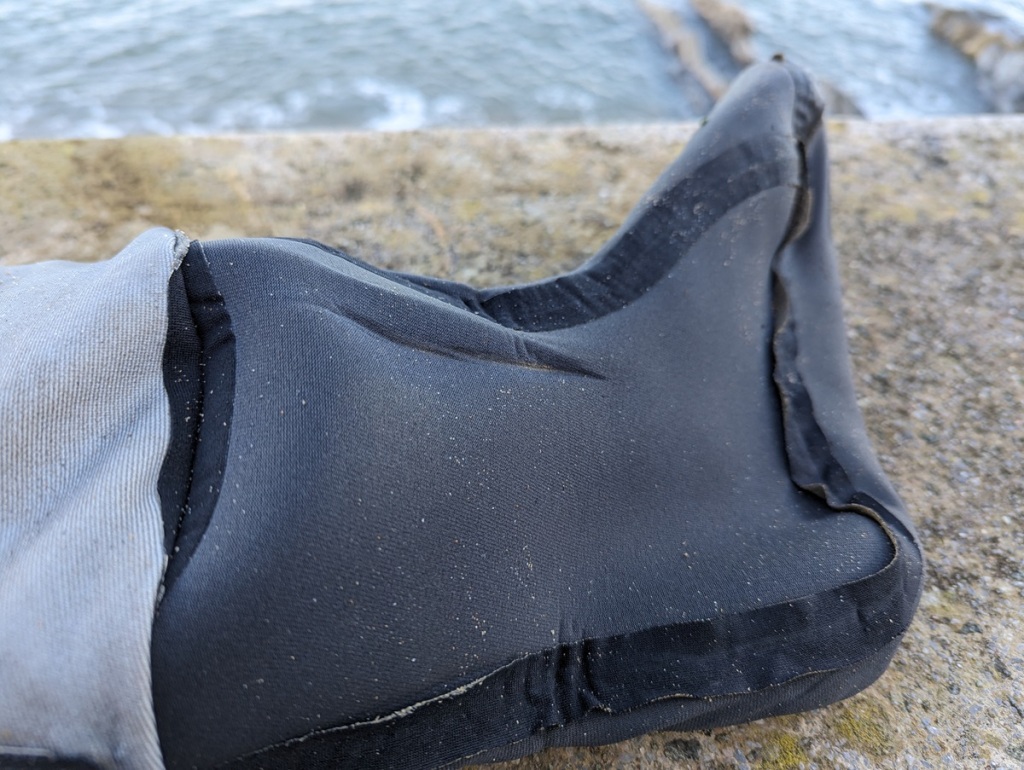
My final verdict on these? You’ll be surprised how ‘thick’ the Cordura material feels when you first wear them – and that did take me a little getting used to, plus, I think the gravel guard could be a little more substantial. However, overall, I love the removable knee pads, and their remarkable robustness in the face of everything I have thrown at them. Indeed, I really cannot see myself spending my money on any other breathable waders at this juncture to be honest. Quite simply, they’re ‘different doner meat’ as they say…
Orvis Pro Wading Boots
RRP £309 (but likely to be in the Orvis sales for cheaper) Available from Orvis (here)
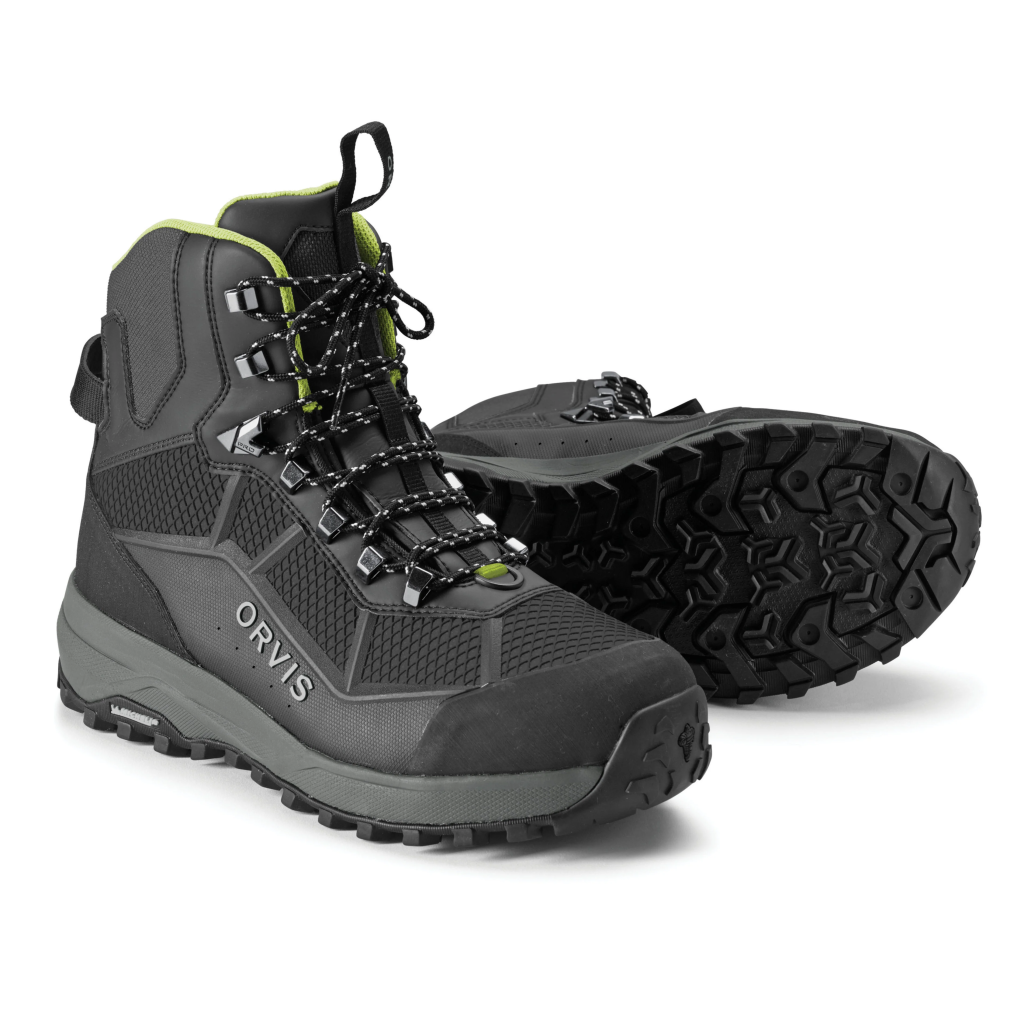
Yep, coupled with the Pro Waders you’re looking at an outlay of over a grand, which I can completely appreciate is a ‘bit rich’ in the sense that many people can’t or won’t spend that kind of money on something that the saltwater will ultimately ravage. However, you already know how many days a year I am on my feet, and remember my guided sessions incorporate being away from the car for 8 hours, so you’re probably talking about an hour of walking to the marks on average also, each time we head out (my personal sessions are shorter, but then I’ll very often walk much further).
First up, I’ll say that the Michelin ‘tread’ on the outsole absolutely is not a gimmick, and that for months after I commenced wearing them (10th March 23 also), even if one of the Posi-Grip studs wasn’t in contact with the surface I was stood on, I still felt like I was wielded to the floor – confidence building most certainly, although you need to be aware that over time this level of ‘grip’ will begin to decline. Onto the studs themselves, and after shelling out a ‘bag of sand’ you’ll be pleased to read that you really do need to spend a further £35 (here) to ensure you’re getting the most out of the boots overall. But again, it’s worth it, as the tungsten carbide they are made from is very hard-wearing indeed.
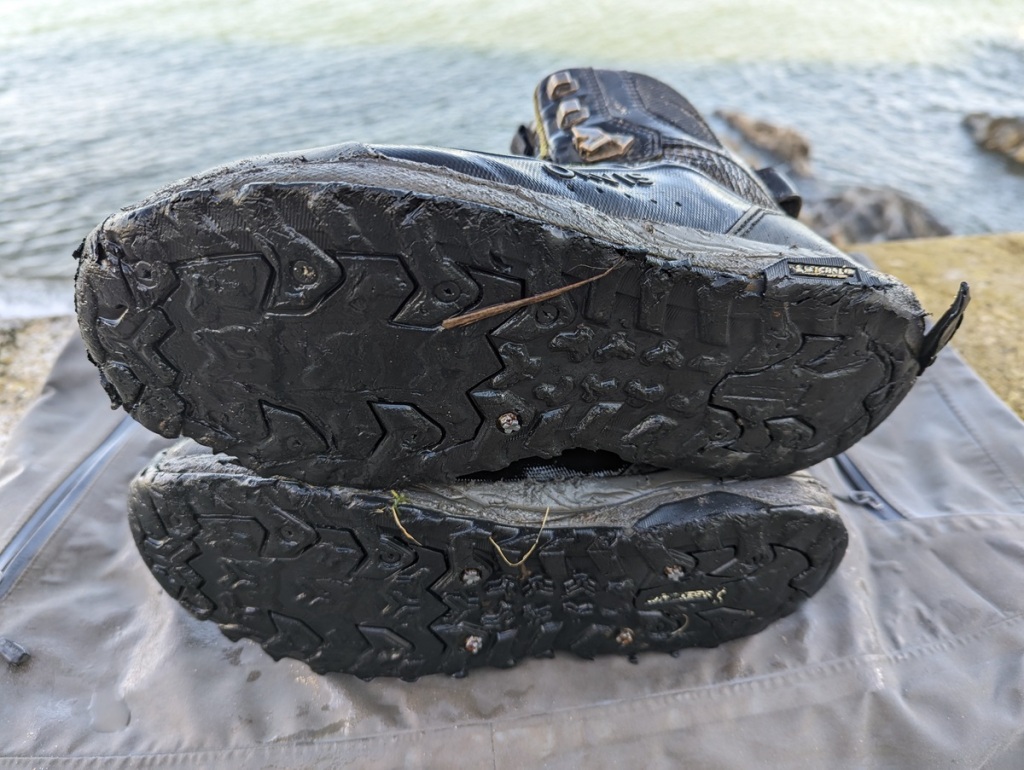
The laces aren’t brilliant, and I’ve had to replace them twice after 4 months of use each time, but for a tenner a pair I can live with that considering how exceptionally well made the actual boot is. To be fair, I have only tended to get through two pairs of my previous staples (the Scierra X-Force Wading Boots that I’ve previously recommended) per year, but in these Orvis Pro Wading Boots, you’re talking about a piece of equipment that just is on a different level entirely.
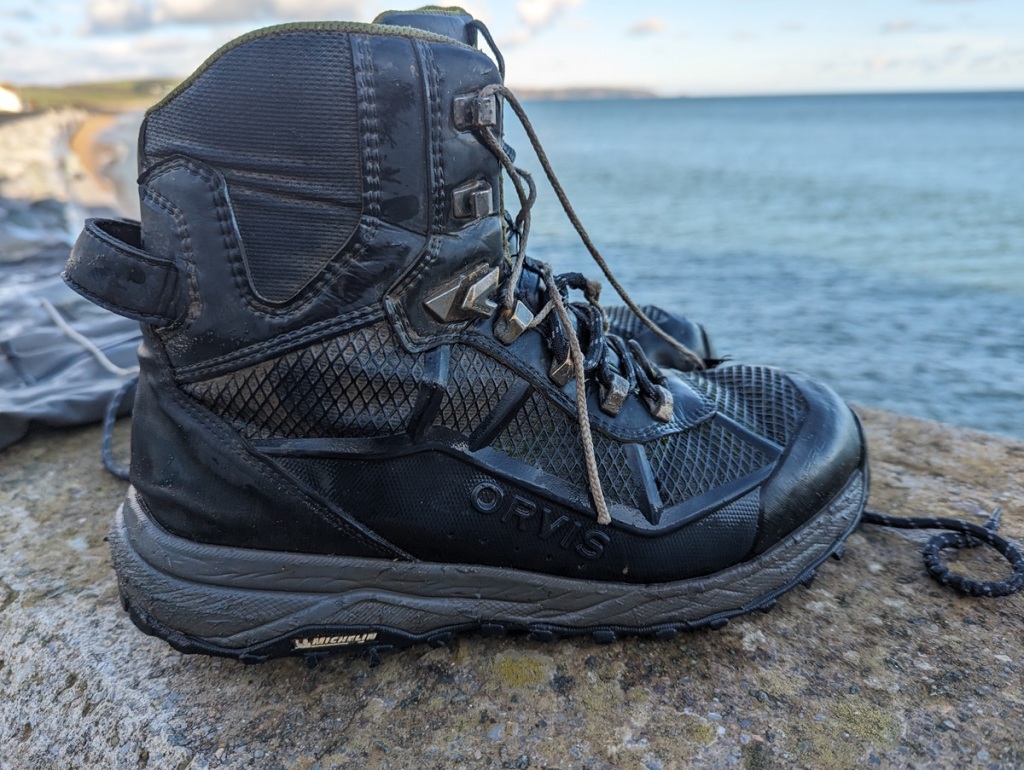
Comfortable? Extraordinarily so! Although, again, I must caveat this with the fact that I wear ‘foot arch supports‘. Regardless, the greatest compliment that I can pay these boots is that every single time I slide them on, they feel like a brand-new pair of boots – even only a few days ago when, as you can see below, they are now in a pretty sorry state in comparison to how they looked when new. What about the ‘achilles heal’ of many a wading boot – the eyelets? As you can see from the shabby pair below, I’ve only ripped out one, which overall, proves to me that they can cope with the saltwater environment.
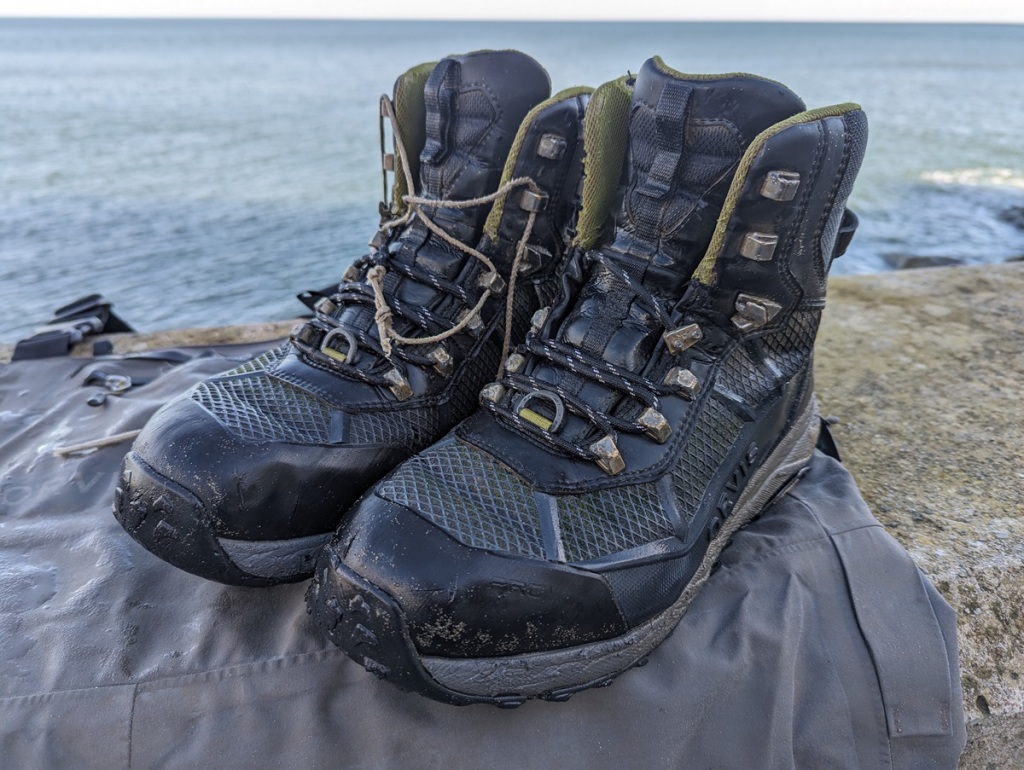
In regard to the studs (which I super-glued into place as well as screwed in), well, I can’t really complain. Although once the sole degrades beyond a certain point they won’t hold the cheapy replacements I had in my drawer. Essentially, I was ‘losing’ one stud in each boot, per month – which again, when you think about the kind of miles I walk, the hours I am standing, and the variable terrain I am covering, all added to the fact that they are tossed into my boot and forgotten about until the next day without ever being washed down, is testament to how well they’re put together.
Would I buy another pair? I already have (when they were reduced to £225 back in the autumn) in readiness for when my current pair collapse on me – which isn’t far off I imagine!
Westin W10 Coastal ’13 Braid’
RRP £46.99 for 150m Available (here)

There’s quite a lot to take in from Westin’s description (it isn’t one of mine I promise!) but it does a brilliant job of explaining why I believe this braid really stands out – so here it is:
“The W10 Coastal Braided line has been developed for sea trout and saltwater anglers seeking the ultimate braided line. Our innovative construction produces a line that combines maximum strength and abrasion resistance with a super-smooth surface. Constructed from premium Japanese Ultra High Molecular Polyethylene (UHMPE) fibers using a 13X (12+1) design with 12 carriers woven around a central CORE carrier to produce a supremely round line with improved strength compared to 8X braided lines. W10 Coastal braid uses an “Advanced Ultra High PIC” construction with 56 weaves per inch for a smoother surface and increased abrasion resistance. In addition, the tighter weave of “Advanced Ultra High PIC” gives the smoothest surface around for longer, more accurate, casts. Sea trout and saltwater anglers demand a line with extra stiffness to avoid wind knots caused by casting repeatedly into often fierce onshore winds. To achieve this W10 Coastal features a Double Dura-Coating to give the line more rigidity. The Dura-Coating gel process that gives the braid a smoother, hydrophobic surface, reducing water absorption and lowering friction. To achieve maximum colour stability, W10 Coastal is soaked in dye tanks before being oven cured to ‘bake-in’ the pigment and finally sealed by a double gel-coat for improved longevity.”

Expanding on some of the narrative above then based on my personal experience with the W10 Braid (of which I have been using the 30lb spool) First things first. Until I catch an inordinate number of bass on braid of this colour (Morning Mist) in the clear waters that are present 70% of the time (on average, although this year is an anomaly) here in south Devon I will remain convinced that dark green is the colour of braid for me. And yes, I have asked Westin if this is possible, because I REALLY like this stuff – more so than the Sufix 131 that have recommended previously, but that in the 18lb form, let me down on three occasions during the same session… A duff spool perhaps? I’m not taking the risk I’m afraid.
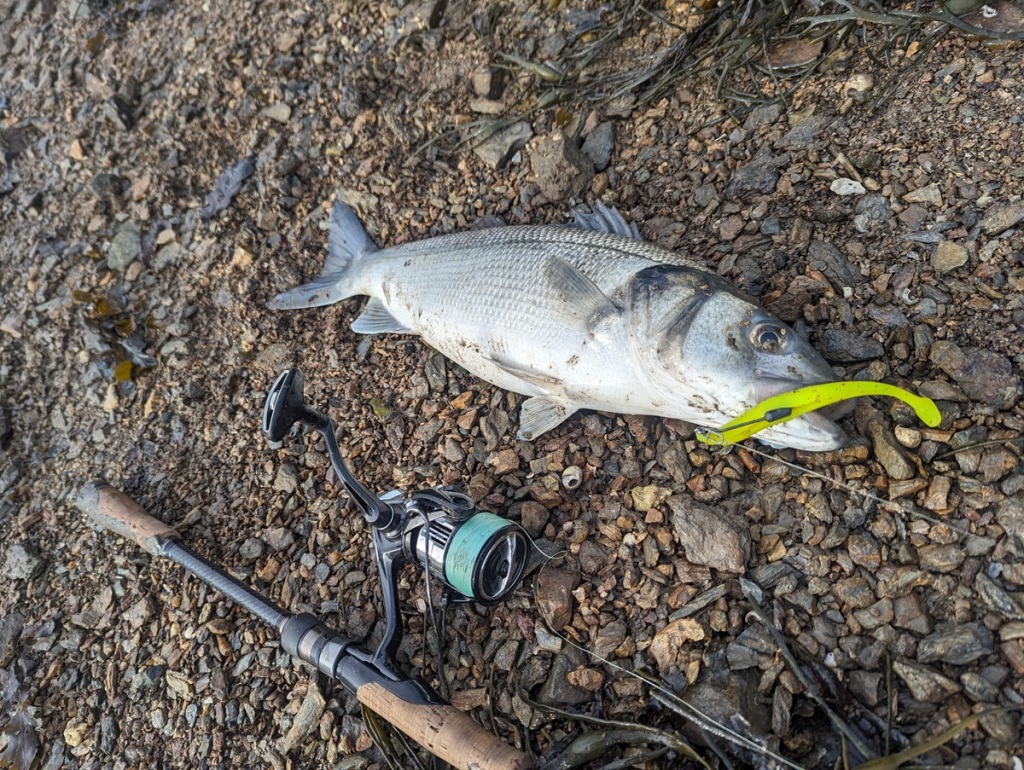
But onto what I LIKE about the W10 Coastal Braid and, oh my goodness does this line peel of the spool beautifully – and I mean like a dream! Whether this will remain to be the case if and when the ‘Dura-Coating’ becomes compromised remains to be seen, but after 6 weeks of use I am not witnessing any noticeable difference to when I spooled up the C3000 Vanquish (more about her shortly!).
Moreover, this lovely, lovely braid is rigid, but not excessively so that it appears or feels unnatural if that makes sense? What’s more, I have 100% experienced, through a direct comparison with the Sufix 131 (when I took two set ups out with me on one of the countless windy days we’ve endured) just how much better the W10 performed whilst utilising 6-10g weightless soft plastics, within a swirling and gusty wind exacerbated by the current bringing the lure towards me on the retrieve – usually ‘wind knot city’ even if you are using high end gear…
To conclude on a very favourable note. I do not own a microscope, but that I managed to wind (to all but 10m) 150m metres of 30lb (0.205mm diameter) W10 onto my ‘Shallow Spool’ Vanquish leads me to confirm that the reported diameter is indeed entirely accurate. Further, a couple more reasons why, if a dark green version is introduced, it could become my ‘go-to’, is that the knot that I use to connect the fluorocarbon to braid (a six-turn surgeon’s knot) is a little tricky to tie with the more supple and floss-like materials out there (I can tie it to my satisfaction 70-80% of the time outdoors with care). Where as with the more rigid W10, I was pleased to discover I could tie it with comparative ease. And finally, a recent snag had me attempting to ‘pull out of it’ on a straight line, and rather than any of the knots parting, I ended up bending the 6/0 weedless out straight instead.
All in all, I’ve been very happy to use it and will be, despite the colour, over the next 2-3 months when most of my bass lure fishing is completed on darkness. Once again, this braid is not cheap, but it is utter quality and I highly recommend it.
Sawamura One-Up Shad
RRP £14.99 (for a pack of 5x 5″ or 6x 4″) Available from Mr Fish Jersey (here)
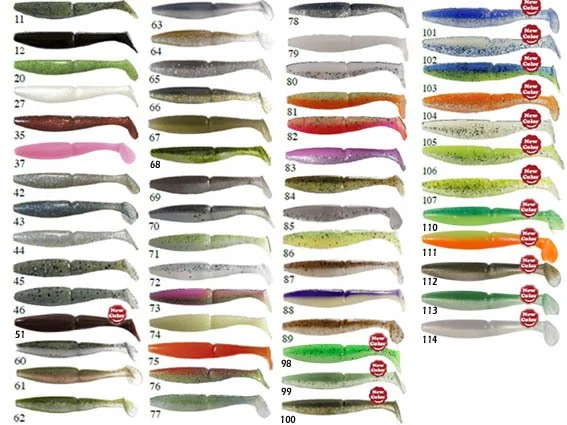
A wonderfully malleable soft plastic paddle tailed lure, with a beautiful action even on the slowest of retrieves that, for some daft reason, I haven’t stocked up on (but I would have by the time you’ve read this!). The Sawamura One-Up Shad just keeps on entering my radar, and when it does it has been the downfall of some very big bass including (as you would have read in my previous 2023 My Catches Review) my joint-largest bass of 2023 at 70cm.
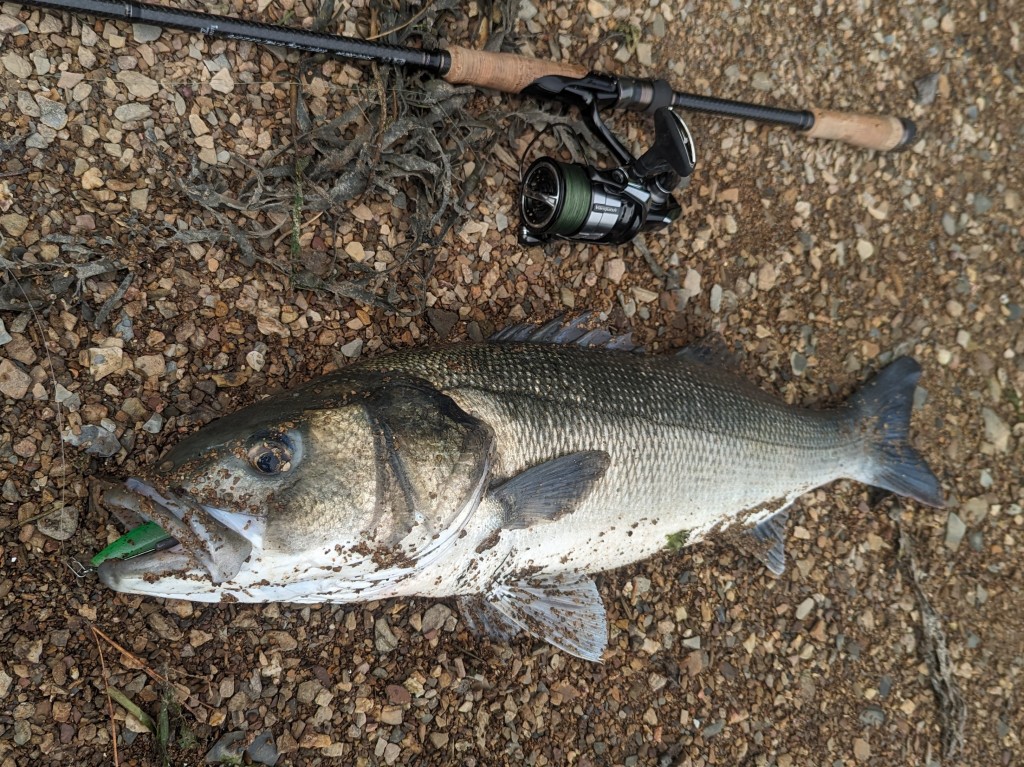
Weighing 7g (for the 4″) and 13g (for the 5″), they feel remarkably ‘jelly-like’ in comparison to similar-looking lures (the OSP Dolive Shad for example) yet their density still enables them to be cast very well, even when utilised on a weightless weedless hook and when there’s some wind about. Moreover, even though the material is unfortunately prone to tearing (especially after a few bass attacks which is fine by me) it is possible, with some attention, to ‘re-rig’ them two or three times without affecting the lure’s action by altering the depth at which you screw in the corkscrew element to the hooks, whereby you can then create a fresh insert and exit point as it were.
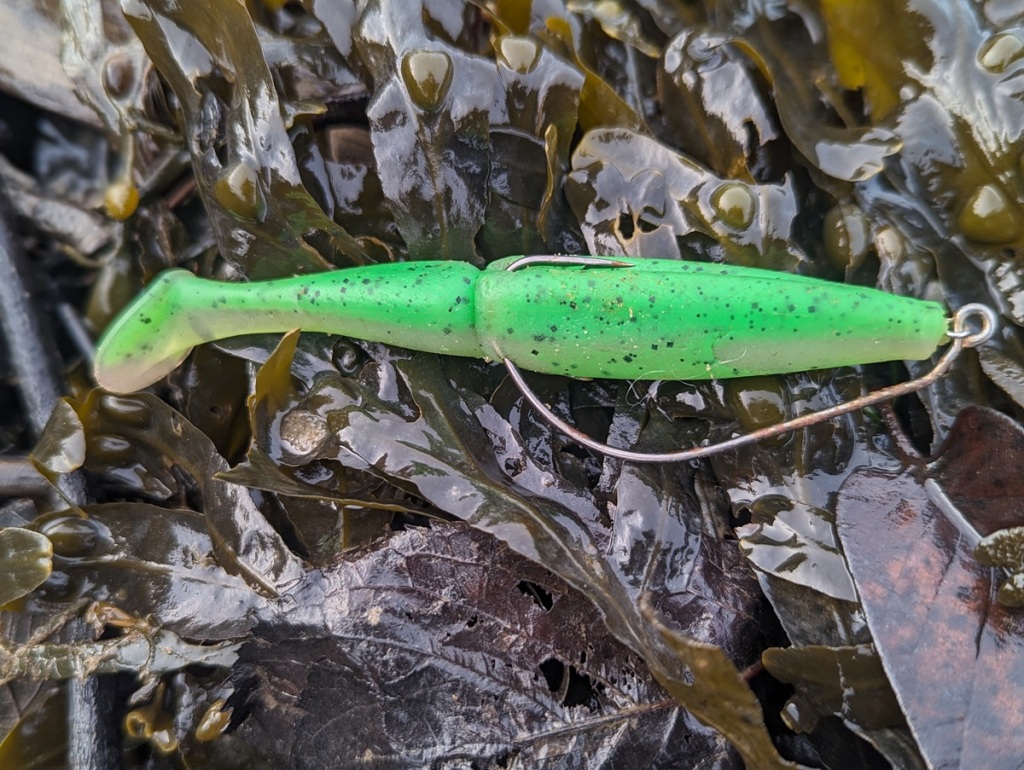
A further attribute to the Sawamura One-Up Shad, and something that I like to ‘make’ them perform, is that when using a weightless hook, if you retrieve them even at a pace of around one-full-turn-per second, they will ‘swim’ very high in the water column, if not actually across the surface. Now, if you haven’t already guessed, what this enables the bass lure angler to do is recover the lure across and within heavy sections wrack – the type that Mr & Mrs Labrax loves to position themselves within…
Give them a try, and I’ll be surprised if you don’t end up finding a permanent place for them in your ‘soft plastics’ lure box…
Rab Men’s Microlight Alpine Jacket
RRP £210 (but currently available here and here for £168)
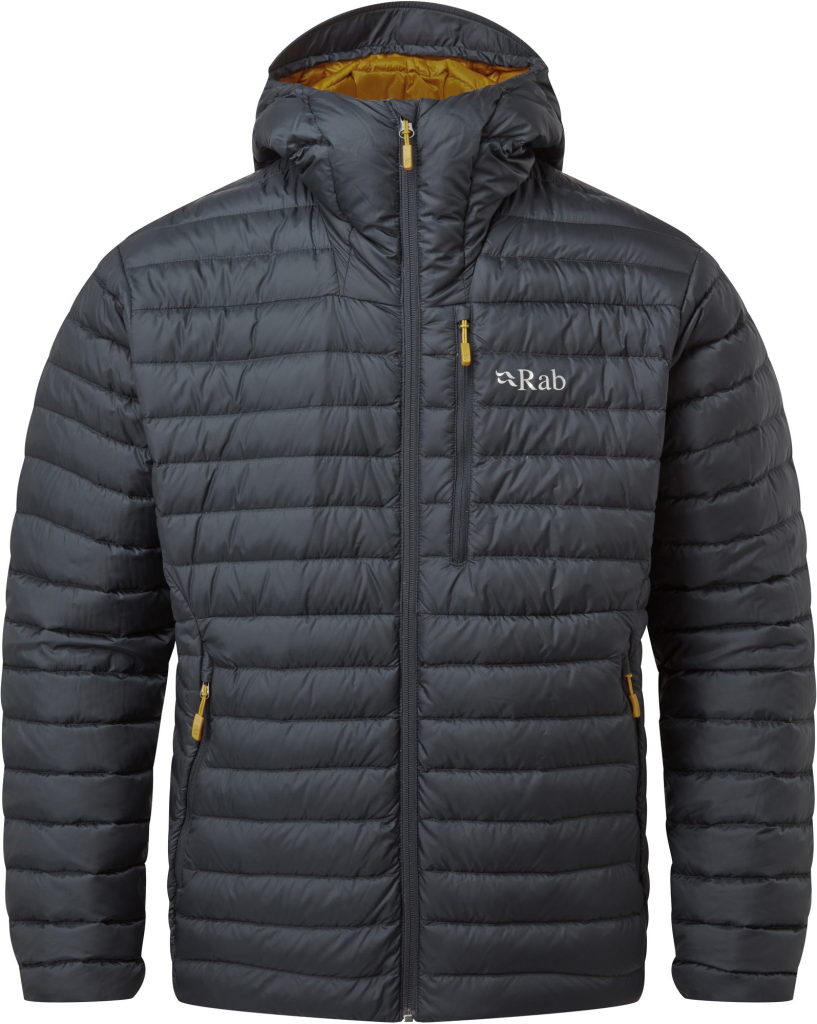
I have owned (and destroyed) quite a few down jackets over the years, but nothing has come close to performing as impressively as the Rab Men’s Microlight Jacket. Once again, I did read some reviews (here and here) and even though I wasn’t entirely convinced that it would keep me warm I decided to take a punt on it… And I’m bloody glad I did too!
Before I get to why I am so happy with it, I’ll bore you with the technicalities of the technical details. So here goes (and yes, this had been shamelessly pasted from Rab’s website:
- Fit:Regular
- Insulation:Recycled 700FP Down with Nikwax Hydrophobic Finish (134g, Size L)
- Centre back length:(Size L): 76cm/30inch
- Weight:403g / 14oz
- Product Code:QDB-16
- Pertex® Quantum ripstop nylon fabrics are soft and packable
- Zoned lightweight micro and nano baffle stitch-through construction
- Close fitting down filled collar
- YKK® zipped hand pockets and large zipped chest pocket
- Internally elasticated cuffs and drawcord adjustable hem
- Main Fabric: Recycled 30D nylon Pertex Quantum, 50g/m², with DWR
- Lining: Recycled 20D nylon, 38g/m²
- Insulation: Recycled 700 fill-power down Nikwax hydrophobic (water-resistant) finish (134g Size L)
- Composition: 100% recycled polyamide outer with 100% recycled polyamide lining
Now I am certainly no expert when it comes to jackets of any kind, but I would be very happy (and I am with this purchase) if I were to design a garment that could achieve all of things below:
- Shove in my back pack.
- That provides ‘shower proof’ capabilities.
- Is very comfortable.
- Is exceedingly warm.
- Is still easily breathable enough for me, in comparison to anything similar that I’ve previously worn.
- Is amazingly windproof.
- Has a wonderfully snug hood with a stiffened peak.
- Is robust, in the sense that it hasn’t ripped despite climbing through numerous hedgerows (as you do in my line of work!).
- Dries out exceptionally fast, even when hung over my car seat overnight if damp.
- Is easily washable (on a 30oC wash).
- Is tumble-dryable for a quick turnaround (which is often the case!).

The Rab Men’s Microlight Alpine Down Jacket has taken everything I have thrown at it in its stride. All of the the zips are still intact and working fine despite the salty environments it has been subjected to, and it even looks smart too (to the extent that I am ‘allowed’ to pick my daughter up from school whilst wearing it without embarrassing her…) I keep saying this I know… It isn’t cheap, but I am out there wearing this gear so often that I might as well buy ‘the best’ without going overboard – not literally as I hate boats!
Guy Cotten Efficient C130 Smock
RRP £229 Available from Veals Mail Order
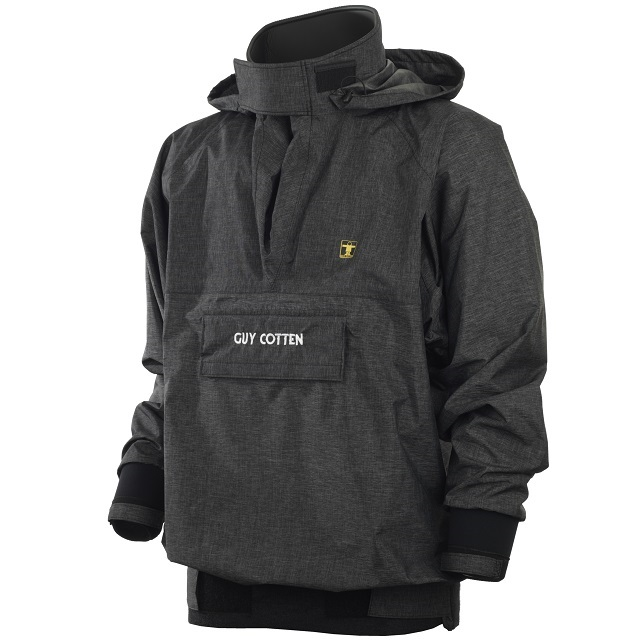
While on the subject of outdoor wear and jackets in particular… If there is one item that I wouldn’t have been without in 2023 it is the Guy Cotten 130 Smock. Quite how an anorak this thin and this light, to the point that it remained in the bottom of my dry bag for the entire season bar when it rained (which it did a lot!) can be so waterproof is quite astonishing.
I know some people can’t get on with the collar, and even though I don’t exactly have Brad Pitt’s jaw line anymore, I haven’t experienced any issues with tucking it all in, even with the lightweight Rab jacket underneath it which, 90% of the time, it would have been. Do I wish had a zip down the front and pockets to keep my hands dry? Yes, I do. As when you need a pee and it and it is already peeing down it is a bit annoying, and I do find myself looking for my gloves (which I rarely where) when my hands have become cold and damp.
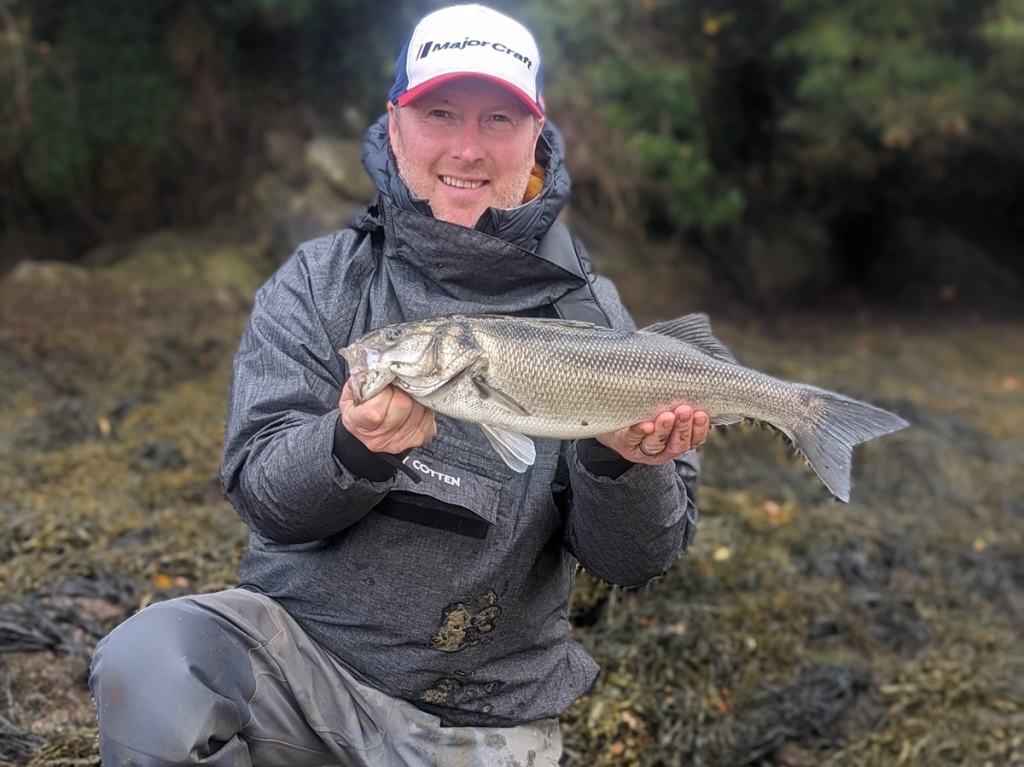

Ultimately though, the zip would probably fail or jam up quickly unless I meticulously maintained it, so if the consequence of it being a smock means that I can stand out in ‘monsoon conditions’ for hours and hours on end, and my core remains completely dry (you may experience a couple of trickles down the wrists if your casting continually) I will take that. Additionally, I have found that this excellent smock dries out remarkably quickly, again, just by being hung over my car seat head rest overnight on most occasions – much to my daughter’s distain!
Savage Gear Sand Eel Pencil (125 in particular)
RRP £9.99 Available (here) amongst others.
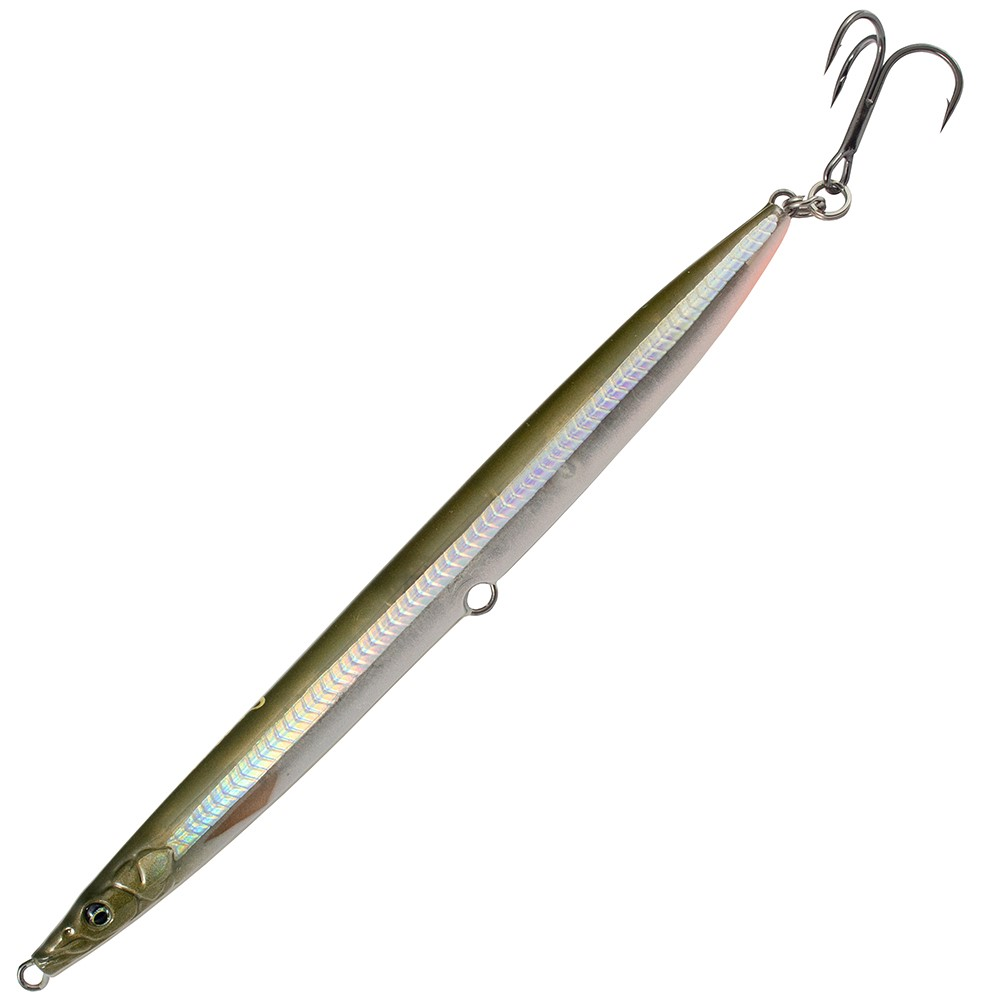
Shifting back over to the types of lure that have proved not only successful, but consistently so over the past 12 months, and the Savage Gear Sand Eel Pencil 125 is another staple in both my personal and client based lure boxes. I enjoy fishing with, and teaching my clients how, when and where to utilise the needlefish lures (such as these, including my own concept(s) here) for the reason that in the certain situations and environments they will out-fish everything and anything due, in my opinion, to the fact they are doing very little… No noise, no intrinsic movement – just ghosting and gliding in an ethereal state with what is highly likely to be an impalpable, yet still perceivable ‘trace’ invariably acting as attractant to a predatory, and dare I say it, ‘intelligent’ bass.
So how does this relate to the SG Sand Eel Pencil? Well, I would say that outside of casting and retrieving them on a shallow surf beach (both by day and night) or recovering them on a sink/draw and flutter technique in deeper water, then the fundamentals are the same as utilising a ‘needle’ – such as:
- Both the SG Pencil and a needlefish are designed to be cast extreme distances, and therefore, can cover a lot of ground.
- Despite being ‘sinking lures’, their design enables them to climb/rise in the water column quickly, whereby the can be retrieved in very shallow water over rocks and reefs.
- Both have caught me/us more bass when they are being retrieved in a steady, smooth, linear retrieve over a ‘jerky’ or ‘twitchy’ motion (there are of examples that contradict this of course).
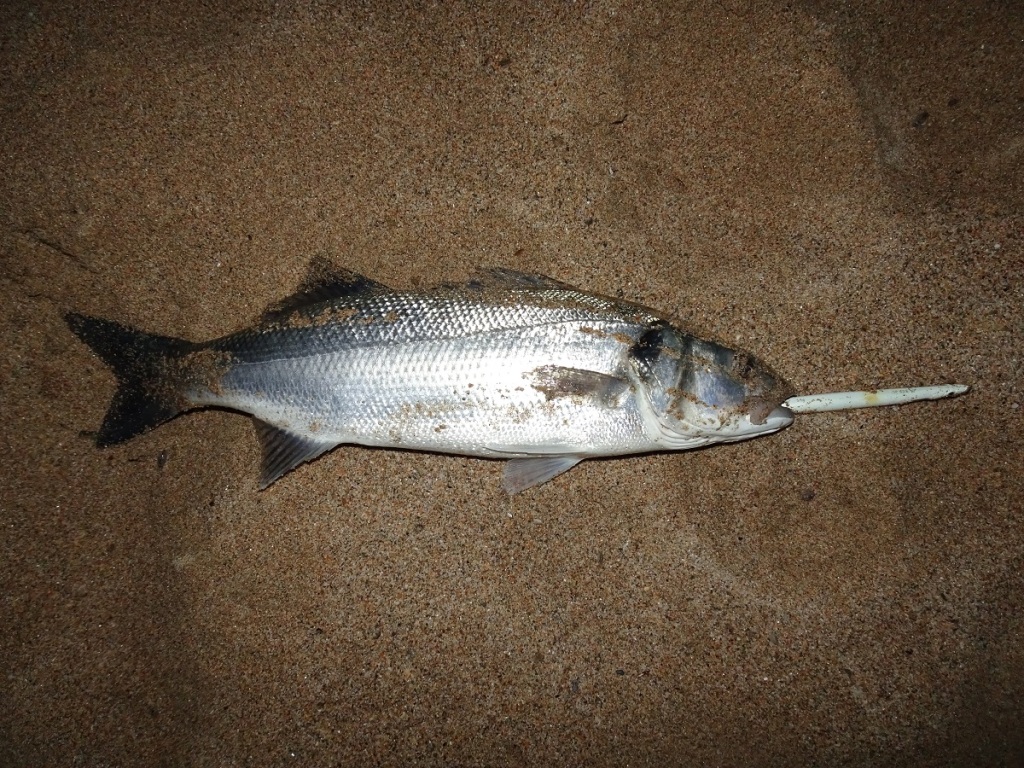
In general, I have found that very often ‘less is more’ when lure fishing for bass in the dark, in the sense that they aren’t necessarily ‘switched on’ by something wriggling, rattling or knocking, especially when the environment is, overall, serene. And yet, by the same token, there are obviously occasions when they are also equally less willing to side-swipe a seemingly ‘life-less’ stick of rock. So what do you do? Well, what I/we have found in the circumstances above, is that the relatively insubstantial (to the angler perhaps) ‘S-Curve’ to what is a fairly basic and simply-designed lure, in comparison to a highly tuned hard minnow or certain surface lure, can and has been the difference.
As I said in The Lure Fishing Podcast interview (here), I firmly believe that when bass lure fishing within the majority of the situations you’ll face, you need to make the bass aware of your lure most certainly, but you also don’t want it to be overly obvious. It’s a tight-rope situation in essence, but one where the virtues of Savage Gear Sand Eel Pencil sit nicely I feel.
IMA Hound Sonic 100F
RRP £20.99 Available here and here
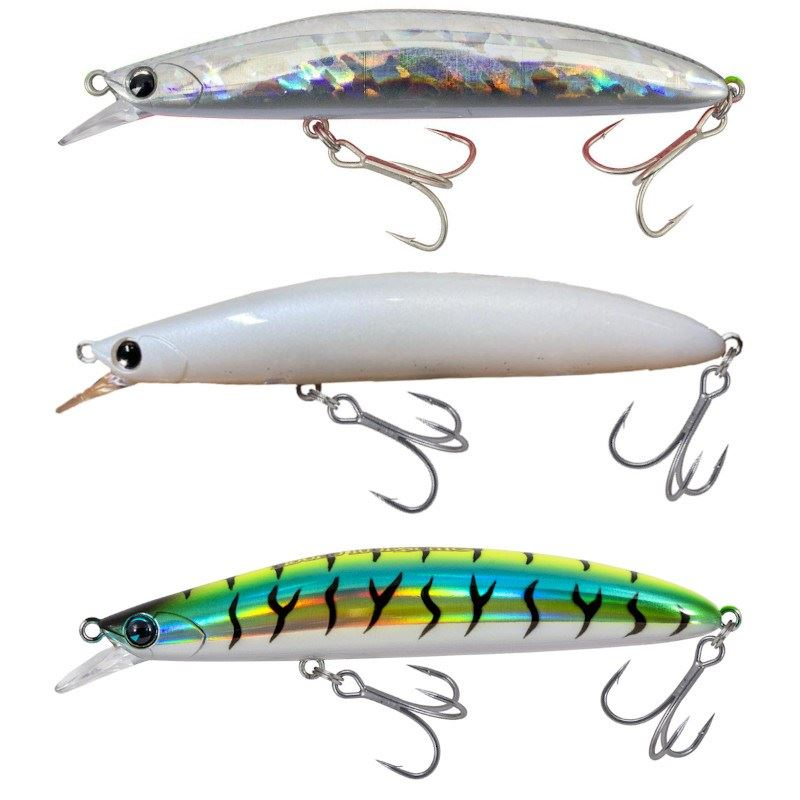
I wrote a short blog post titled ‘Bass Lures – Is there an optimum shape and size?’ over 6 years now in which I pondered the advantages and potential disadvantages of utilising the ‘smaller’ versions of many popular lures – the Daiwa Shoreline Shiners and the ‘Sonic’ getting a favourable mention all those seasons ago! Being transparent, I think the more I have gradually shifted a little from fishing and especially guiding out on the rocks in rougher seas, in tandem with this, I and we haven’t tended to use the hard, diving minnows (that are ‘golden’ within these situations).
However, as you may well of read within both of ‘2023 Reviews’ (here and here) two things have occurred over the past two seasons that have seen a positive shift towards the humble hard minnow. Firstly, I/we have enjoyed some excellent sport, both in daylight and darkness from the extensive sections of steeply shelving beaches found around south Devon, more so if there has been a bit of a sea/swell running, and pushing that all-important white water up the shingle banks.
Second, something else I have covered in many of my previous posts and publications, is that when what I have previously termed as their ‘search image’ becomes exceptionally refined (be it because the water is highly transparent for long periods, or when there are copious levels of bait fish around or indeed both) then the bass can become ridiculously ‘fussy’ about what they will ‘hit’.
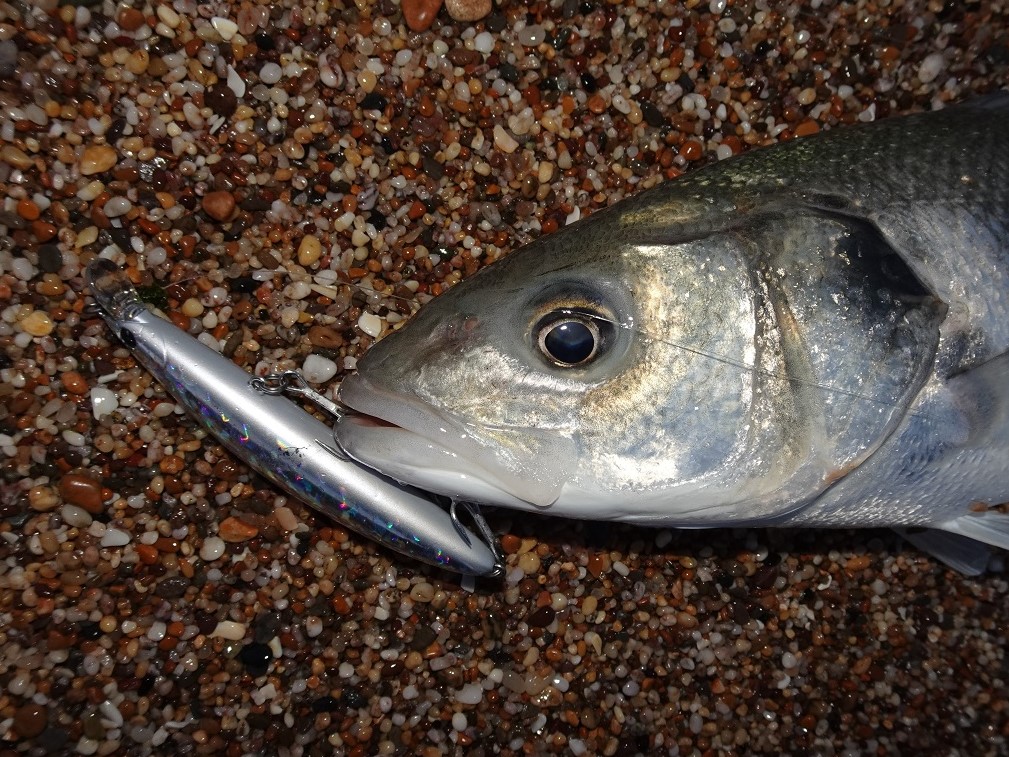
So with these components in mind, I placed the IMA Hound Sonic 100F slightly above the similarly brilliant IMA Sasuke SF95 within my personal armoury, primarily because it can be utilised very effectively within more environments. Indeed, while both lures are superbly designed, very well built, and with the all-important perfect ‘size-to-weight ratio’ perfected so to enable fantastic casting capabilities alongside a wonderfully stable swimming action, it is the Sonic that takes this year’s ‘hard lure’ prize based purely on the fact that can handle the more turbulent seas and the undertow or backwash a little bit better.
IMA Chappy (80 and 100)
RRP £19.99/£20.99 Available here and here.

For me, versatility is one the major assets that a lure can possess, and that is one of the reasons why the IMA Chappy is within my ‘Top Ten’ again, the second reason being that I think it is a bit of ‘misunderstood’ lure.
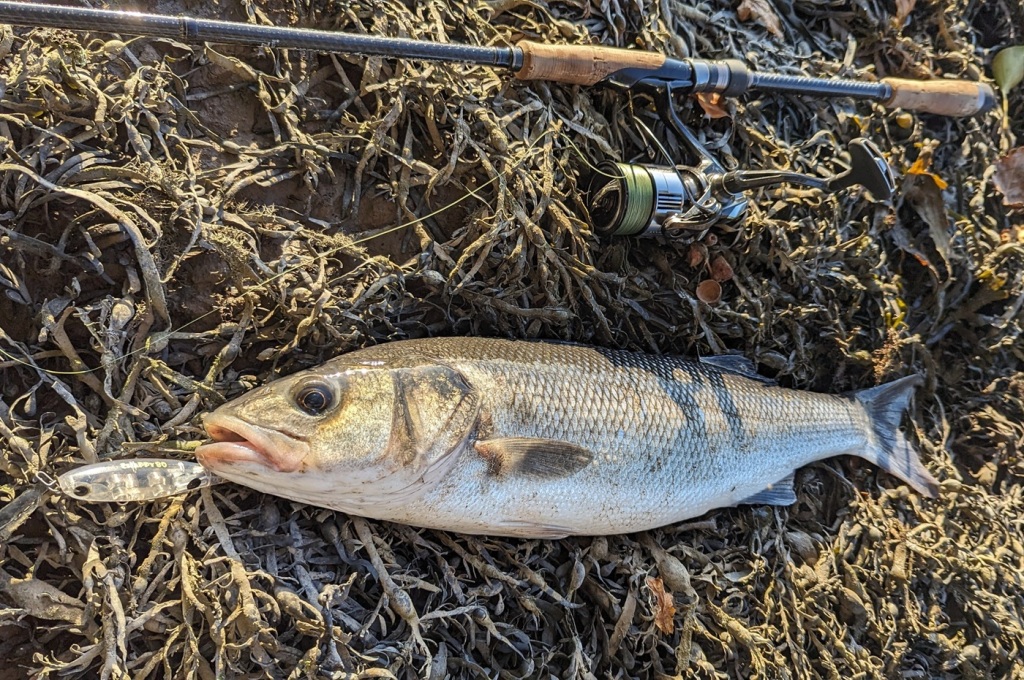
I’m thinking the ‘Megabass Zonk’ for use in a rough old sea here, and it goes without saying that the majority of lures and lure types are designed to fulfil one or maybe two specific roles – and there is absolutely nothing wrong with that. But harping back to how many days I spend out fishing and guiding, and I can tell you with utter conviction, that when you have the ability and capability to ‘react’ to certain changes, be it the light levels, sea state, strength of the current, what the fish may be interested etc. then possessing a single lure that can place more of the odds in your favour is absolutely invaluable.

The above is ‘watercraft’ in essence. And although you cannot ‘make’ the sliding, snaking, zigzagging, top water charmer that is the IMA Chappy swim underwater to become a sub-surface lure, the manner in which you retrieve it can certainly help to bring the bass in from far – and this is why I hold it in such high regard. My recent blog post ‘Client Catches – A Happy Chappy‘ describes, in detail, under which conditions I will use them. But for example, I would look to ‘pop’ either of the variants within in a strong current. Or, I would look to retrieve the 80 in a subtle and consistent manner by casting it parallel to some estuarine margins in 18″ of water, or indeed, I may utilise the 100 in a choppy sea, or swell being smashed around an exposed coastal gully. I’m sure you get the picture and my enthusiasm for them.

So in a nutshell, it goes without saying that they cast very well – on a loopier cast that I would a Patchinko 125 that I would ‘punch’ out there admittedly. They are adaptable, they are easier to ‘work’ than the other hybrid top water I love (the Whiplash Factory Spittin Wire), plus, they catch lots of bass across a wide spectrum of terrain, depth of water and sea conditions – all of which helps to explain why I pinpointed it as a lure that would benefit from a ‘transparent/translucent’ finish a la the MC1…
Shimano Vanquish 23 FC 3000 MHG
RRP £464.99 Currently available from Uttings at £429.99 (here)

I fell heavy for my previous Shimano Vanquish C3000MHG (the 19 version that, if you can pick one up for £100 less than the current 23 model, is still a bargain may I add) with the lightness, smoothness, and surprisingly, its durability that stood out. Made in Japan (alongside the similarly high-end Twin Power, Exsence and of course the Stella) rather than Malaysia, something that I convey to my clients on a regular basis, is that if you pay double the amount of the still very nice Vanford or Stradic, you will get double or perhaps triple the life out of the ‘high-enders’ – just my opinion, although they are of course a hell of a lot if variables contained within that statement associated to conditions in which you use them…
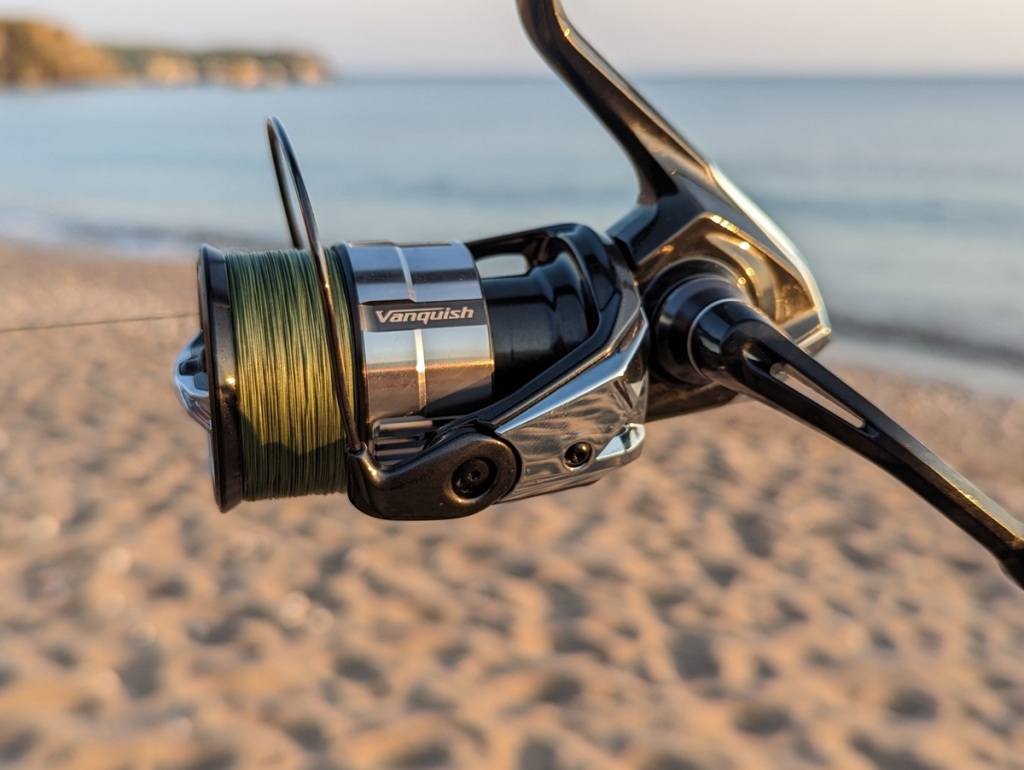
The Stella? When you turn that handle you cannot help but purrrrrrr like Liz Hurley on another bikini photoshoot. But I had to ask myself two questions using the 22 variant: Was it really worth the extra dollar – enough to buy a Vanford and some quality braid at £220 or so more than the Vanquish? And, would/did the additional 40g of weight ‘unsettle’ the overall balance of my set up, that as you may have previously read, I deem to be paramount to my levels of success…?
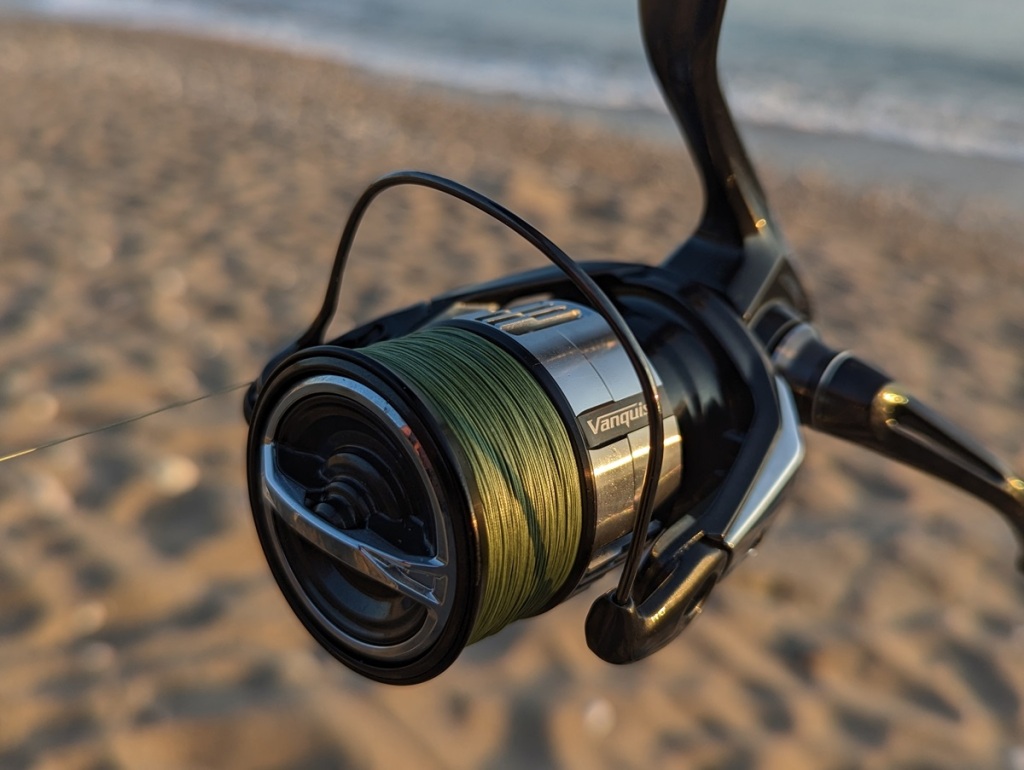
‘No’ was the answer to my first quandary, and yes was the resounding answer to the second. Which is why I plumped for the Vanquish that I was very fortunate to purchase from the extremely helpful chaps at Anglesey Bait Centre (thank you guys, I really appreciate your assistance). And let’s be honest here, the Vanquish is still one of the most progressive fishing reels out there in its own right, boasting most of the features and all of the new technologies found on the Stella anyway – including my favourite, and something that just oozes class – the incredibly slow Infinity Loop Oscillation (the speed at which the spool moves up and down).
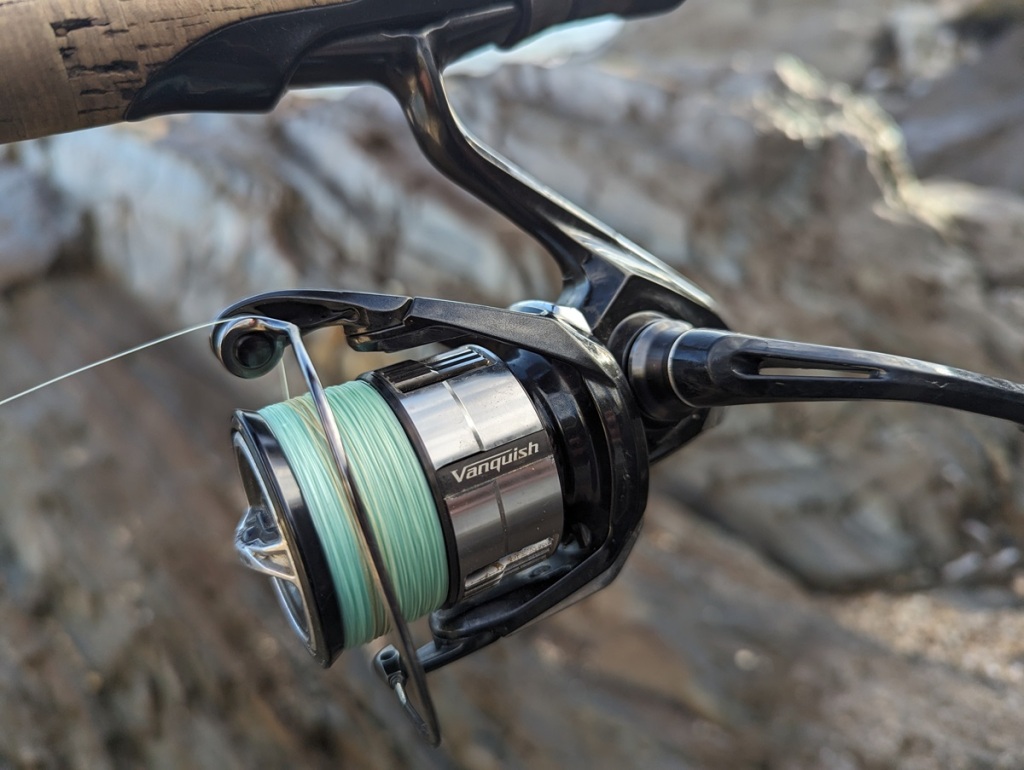
If your juices aren’t already following, or they are, and you’re sat there trying to figure out how you can blow 430 notes on another fishing reel without the missus finding then I’ll leave you with the Shimano Vanquish video below:
As ever, I welcome any comments or feedback.
My Books
My latest book, ‘Bass Lure Fishing – A Guide’s Perspective (Volume 2)’ is IN STOCK and available to purchase. Moreover, details of the contents within each respective book in the featured image above can be found in the blog post that I wrote upon its release here. To purchase directly, there are various PayPal payment options applicable to each book contained within this link also.
Furthermore, my first book: ‘The Lure of The Bass‘ is BACK IN STOCK, and my second release ‘Bass Lure Fishing – A Guide’s Perspective Volume 1‘ will be BACK IN STOCK on the 15th January 2024 Therefore, if you would like to reserve and/or pay for a copy of either of these titles, and you would prefer to pay by Bank Transfer, you can contact me via the Contact Form below or directly at southdevonbassguide@yahoo.com and I will answer as quickly as I possibly can. Thank you.
Your message has been sent
Thank you for reading.
Marc Cowling
